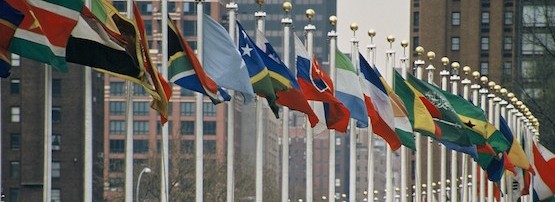
In just two weeks, UN member states and leaders from the Internet community will gather in NY to discuss the future of the Information Society, “post-2015” (WSIS+10). The last round of negotiations was held last week, so far without any final results, although with an agreement looming in the distance.
But what does “post-2015” mean? And what has it got to do with the field of Internet governance?
The future of the Information Society, and a “post-2015” vision, is intrinsically linked to the past through the World Summit of the Information Society (WSIS) in 2005, and to the future through the recently adopted 2030 Agenda for Sustainable Development. Together they shape a framework for the global community’s efforts and ambitions to harness the benefits of ICTs for economic and social development, and this is why 2015 marks a milestone in history. Not only is it the year when the global community reviews the progress made since WSIS, it is also the year of new ambitions for the future through the so-called Sustainable Development Goals (SDGs). This is why “post-2015” is more than just a vague expression, but an expression to describe a turning point in history when lessons from the past are to support ambitions for the future.
So how do the lessons from the past ten years fit into the new ambitions? Well, at its core, many of the issues remain, such as increased access to the Internet, and people’s ability to utilize ICTs. This was apparent last month at the 10th IGF where much of the attention was devoted to developing ” Policy Option for Connecting the Next Billion“. These are still the great challenges ahead, but as technology has come to permeate almost all aspects of people’s lives, the discussions have shifted from the technical to the social impacts of the emerging Information Society. For example, today the digital economy contributes 5 to 9 percent to total GDP in developed markets, and in developing markets it is growing at 15 to 25 percent per year [PDF, 983 KB], which means that increased access to the Internet, and the ability to use it, is more than bridging a digital divide – it’s an opportunity to bridge economic and social disparities.
The correlation between Internet access and economic and social development is why the post-2015 vision is so important. Ten years ago we could talk about an Information Society as something separate, as something parallel to the “real world”, and as a potential to be created. However, what was once a potential is today an intrinsic part of modern life, and although we have a long way to go before it’s accessible to all, the Information Society already exists and it’s not something running parallel to processes of “the real world”. On the contrary, it is very much the potential driving force of a modern society, with the Internet being the great catalyst for empowering social and economic development.
This is why issues of the Internet’s governance form such a core part of the discussions, because it links to a wide variety of issues beyond the technical domain. Some of those links are clearly visible today, such as sustainable development, security and human rights, but many of the issues we have still to grasp. The one thing we do know is that the success of the Internet to date has been due to its open, transparent and inclusive architecture, governed through a unique multistakeholder model that has favored cooperation over self-interest. But as ISOC’s analysis of the current WSIS+10 negotiations show, available in a matrix structured by topics, some governments do not share a post-2015 vision where we build on these lessons, but rather regress to a world of frontiers where they are the sole masters of the domain. A world where national interests trumps all, where human rights are relative, and where the global Internet is more of a threat than an opportunity.
In the end, the WSIS+10 negotiations all boil down to a fundamental question: What kind of information Society do we want for the next decade?
Asserting principles, grounded in profound human aspirations, is an essential stage for a group of individuals that want to shape a common society. Addressing this question is the main post-2015 challenge, beyond further technical discussions. As the digital revolution gradually impacts all spheres of our public and private lives, it is time for users, business actors and governments to assert their beliefs, and take action to shape the future of the Internet beyond 2015. It is time to come together as an Internet society.
Just a few weeks ago, 195 Member States endorsed UNESCO’s Internet Universality Concept, highlighting the conditions for continued progress of the Knowledge Societies and the elaboration of the Post-2015 Sustainable Development Agenda. UNESCO calls for an Internet that should be (i) human Rights-based (ii) Open, (iii) Accessible to all, and (iv) nurtured by Multi-stakeholder participation.
In many ways, this approach paves the way for the Information Society post-2015. We are looking forward to engaging in the WSIS+10 review in two weeks.
This post first appeared on The Internet Society blog.
Constance Bommelaer is the Senior Director, Global Internet Policy at the Internet Society and helps developing partnerships with international organizations as well as strategic positions on key Internet issues.
The views expressed by the authors of this blog are their own and do not necessarily reflect the views of APNIC. Please note a Code of Conduct applies to this blog.
